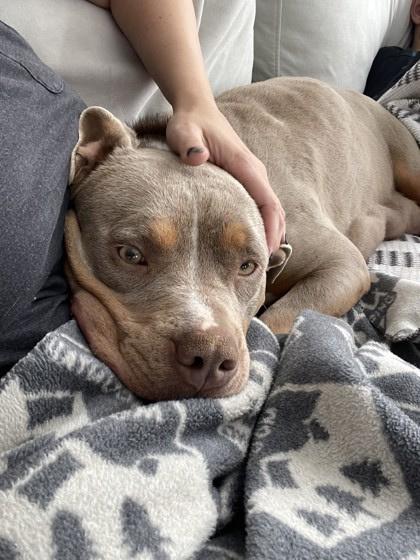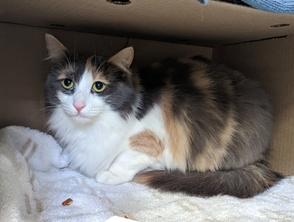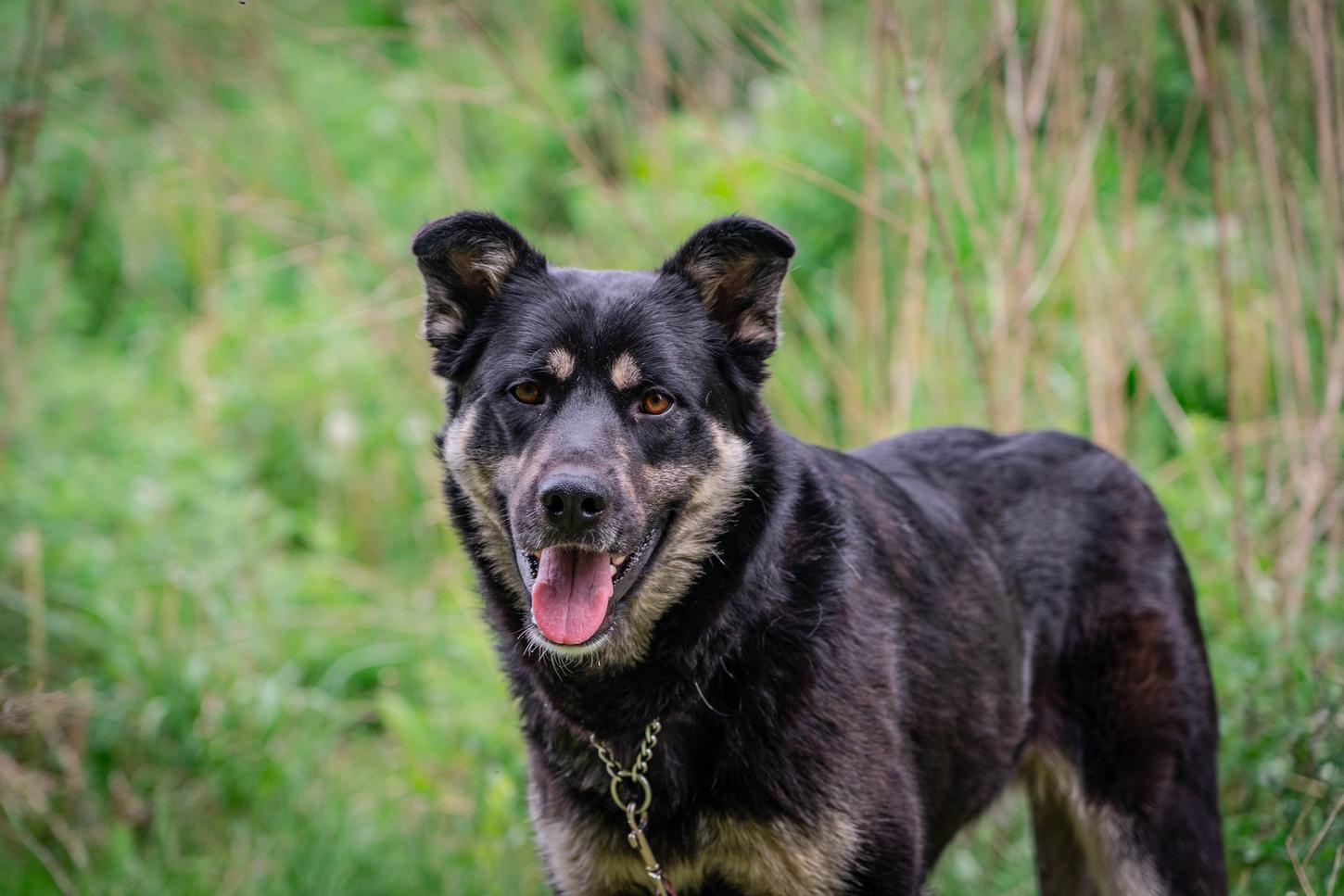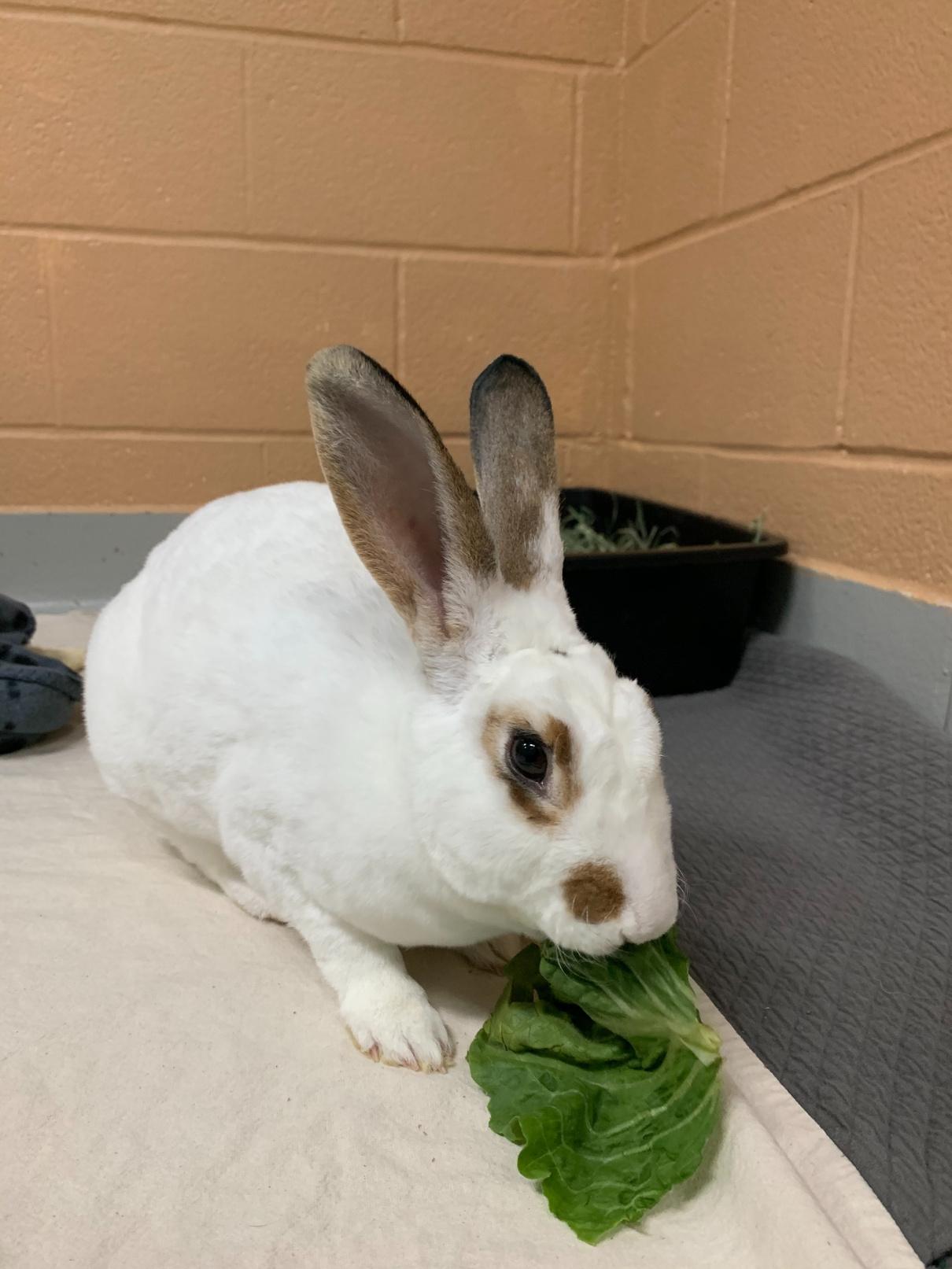2022 ANNUAL REPORT











To be a leader in animal welfare, working for a compassionate society where all animals are respected and valued.
With a team of industry leading experts and a passionate community network, we pursue our mission by reducing animal homelessness, ensuring access to care, and fighting to preserve the human-animal bond.
We boldly face these challenges with a multi-faceted approach. From industry leading shelter care, training, and veterinary services to innovative, expert-led programs in temporary sheltering, accessible veterinary care, and community support programs and services. And our efforts are made greater through our outreach services and public support programs.
As a major voice in animal welfare, we use our platform to advocate for better legislation to protect animals, while empowering communities and organizations to help more animals and their animal-loving communities.
It is in the pursuit of our mission that Toronto Humane Society is like no other.
As the landscape of animal welfare changes, so do the challenges we face.
The increased cost of living is forcing many pet parents to ask for help through our Pet Parent Support Network, inflation of pet health care costs are driving an increasing numbers of lower income pet parents to our Public Veterinary Services, and our Pet Food Bank has changed from temporarily helping pet parents to becoming a necessity in our community.
The increased costs of living are greatly impacting Toronto and the community we serve. In response, as we move into 2023, we plan to take a more proactive approach to help keep more animals in their loving homes and out of the shelter system. We will continue to increase our capacity to assist pet parents by building on our public programs to ensure that they have access to care. We have much more work to do to help keep families together – but we will continue effect change in our community.
We helped thousands of pets and their families find homes and stay in their loving homes in 2022. I want to personally thank you for all that you’ve done. It’s your support behind every life-saving vaccine, every friendly phone call from a Toronto Humane Society staff member, and every pound of food that is donated to a family in need. With your support, we can continue to invest in care for pets who need us and support families whose lives they enrich. Together, we can Improve the Lives of Animals.
Sincerely,
Phil Nichols, RVT, CAWA Interim CEOStory: Supporting a Pregnant Pitbull Through Pregnancy and Out of Province Rehoming
ng a Pregnant Pitbull Through Pregnancy and Out of Province Rehoming was transferred to Toronto Humane Society as a pregnant dog with heart murmur and alopecia.

er she arrived, she was placed in a loving foster home where she gave birth to 12 puppies.
r puppies grew bigger, they received their spay and neuter surgeries and were adopted. Squishy spayed, put on medication to help her cope with her heart murmur, and was given treatment for ecia.
Squishy is a Pit Bull, arrangements were made to find Squishy her forever home outside of due to Breed Specific Legislation. She was sent to an animal welfare organization in Nova Scotia e was soon after adopted.
$63.20 Average cost of vet care per animal per day
$54.55 Average cost of shelter care per animal per day
101 Animals onsite every day, on average
1913 Animals adopted
That includes 659 dogs, 1047 cats and 207 special species.
This also includes $83,65887 worth of public subsidy that as provided These appointments include microchipping flea and tick preventatives vaccinations, euthanasia, and Heartworm prophylaxis
Dental care services will be expanding in 2023 Our Public Veterinary Service team performed emergency dental surgeries for clients who needed them for their overall wellbeing
1,658
This includes $83,887.30 worth of public subsidy that was provided Subsidy funding helps make essential veterinary care more affordable, which in turns helps more pet parents in our community care for their pets and keep more families together.
Our Trap Neuter Return (TNR) program ensures that community cats are given medical support they need to live healthy lives outdoors while also helping to control the community cat population.
Coco's* pet parents were worried when she started refusing food, vomiting, and seemed to have much lower energy than normal. They brought Coco in the middle of the night to an emergency veterinarian who suspected a pyometra, an infection of the uterus, and quoted them $4000-5800 for emergency surgery and hospitalization. This unexpected expense right before the holidays was out of reach for Coco's family, so they set to work trying to find a veterinarian who would perform the spay at a more affordable price. Despite being fully booked, the Public Veterinary Services clinic managed to squeeze Coco in for the urgent procedure. Her family was so relieved, and after learning about what can happen to pets who are not spayed or neutered, her family brought the cats of their extended family to all get spay and neuter surgeries as well.
*Name has been changed for confidentiality.
Impact Story: Reuniting a Sick Child With their Beloved Pet Right Before the Holidays
A family applied for the Urgent Care program after learning that their child, who had a critical illness, required hospitalization. They’d have to be in and out of the hospital for months of procedures and they were worried about being able to regularly care for their dog.
Their dog was placed in a foster home while the family cared for their child. Once the child’s health improved, the pet was reunited with their family right before the holidays.
313 Animals and their families supported
Returned to their family
Family could not keep their pet
Could not contact their family
Euthanasia
Impact Story: Introducing Our Monthly Community Day Events
Rising costs and inflation are a growing concern for Canadians, affecting everyday expenses like groceries, gasoline, and housing. Pet parents are also feeling the sting, with increased costs of veterinary care, food, and pet supplies.
On October 22nd and December 3rd we held our first two Community Day events. We distributed over 2,500 pounds of pet food, distributed pet accessories such as carriers, dog crates, harnesses and more to community members in need. These items were donated to us, and although they’re in good condition, we had a surplus and wanted to share.
632 Total Unique Training Clients
239 Total Subsidized Training Appointments
17%
Surrender Retention Rate
717 Total Training Appointments
4,956 Unique Clients Served Through the Pet Parent Support Network

The Pet Parent Support Network connects with pet parents to explore alternative options to surrendering their pet such as training and behaviour support providing pet supplies, or helping to source affordable medical care By having a dialogue with pet parents after they sbmitted a surrender request, we were able keep more pets where they belong – in their loving homes
15,406 Pounds of Food Distributed Through the Pet Food Bank
Our Pet Food Bank is open to the public everyday.




908 Animals Transfers
In December 2022, our team set out to help Provincial Animal Welfare Services (PAWS) after they had to intervene at an overcrowded animal welfare organization. We agreed to help assess, and to bring 45 cats to Toronto Humane Society. Many of them had serious medical conditions, including a rare bacteria disease called beta-haemolytic Streptococcus.
Once we identified this unique disease outbreak, we reached out to the other animal welfare organizations that also took some of the cats into their care so that they could identify and treat the disease correctly.


102 Animals
to Network Partners
Because the cats that were transferred into our care were housed together, we were able to readily identify which cats were showing clinical signs, who had been exposed to the disease, minimize the number of pets affected, and treat the ones that needed medical care. We are happy to report that many of the cats from this transfer received the medical care they needed and were adopted into loving homes.
Impact Story: Receiving Love and Care in a Temporary Home Due to BSL Legislation
Victor was surrendered to our care by a kind-hearted passerby who noticed him on the street. He was severely malnourished with a badly broken leg. He was so skinny you could see almost every bone of his body. His poor, tired frame was shaking – it was heartbreaking to see.
63 Percent of animals in our shelter program that entered foster care
He immediately received surgery and other treatment from our veterinarians and was placed in a foster home where he was adored, pampered, and even made several appearances on social media to spotlight Breed Specific Legislation issues while showcasing his loving personality.

116 Average days of length of stay for adoption track animals in foster homes
With support from his foster family, it did not take long for Victor’s physical and mental health to start improving. He stayed in his loving temporary home while our Rehoming team worked to find him a home out of the province.
Victor was flown to Alberta and stayed at a Pit Bull sanctuary. He was only there for a few weeks before he was adopted.
11 Average days an animal waits to be placed in a foster home

The first chapter that Dr. Jacklyn Ellis, Director of Behaviour at Toronto Humane Society, wrote titled “Fe Behavioral Assessment” provides insight on how to conduct behavioural assessments holistically (instead of looking at their behaviour in shelter, which can be greatly impacted by the environment), how to use information to improve the cat’s welfare while in the shelter’s care, and how this information can be used to find the cata suitable adopter.

Her second published chapter titled “Feline Enrichment” explores different categories of enrichment, suc sensory enrichment, and how to implement these different types of enrichment on a macro and micro level. These chapters will reach thousands of shelter staff and volunteers, as well as professional trainers, behaviourists, and veterinarians working with shelters. Dr. Jacklyn Ellis’ contributing chapters will have a significant impact on the welfare of animals everywhere.
Our team of experts are second to none. The work they do every day is a great reflection of our ongoing mission to Improve the Lives of Animals and strengthen the human animal bond.


Every summer we see headlines, stories, special features and excuse after excuse – pets are left in parked cars to die of heat exhaustion. Cars can become as hot as oven during the summer months. The goal behind our summer advocacy campaign was to remind pet parents about the real dangers of leaving pets in hot cars and how they can keep their pets safe in the hot heat. By sharing blog articles, talking about the dangers on social media, and connecting with media outlets to further promote this life-saving message, we received over 16 million views and impressions to help save lives.
Dr. Jacklyn Ellis, Director of Behaviour at Toronto Humane Society, recently published her study
“Beyond “Doing Better”: Ordinal Rating Scales to Monitor Behavioural Indicators of Well-Being in Ca paper discusses standardizing the language used and conditions under which feline observations ar on a scale of 0-5.
By using ordinal scales and collecting rating scores during a standardized time of the day, s volunteer members would be able to produce a more holistic picture of the cat’s psychological we Dr. Ellis’ research will support animal welfare organizations. They’ll be able to better understa interpret, behavioural indictors, which, in turn, will improve the well-being of more cats i communities.
Email: info@torontohumanesociety.com



Phone: (416) 392 - 2273
Mail: 11 River Street, Toronto, Ontario, M5A 4C2
Oscar Stella Dr. Fluffers